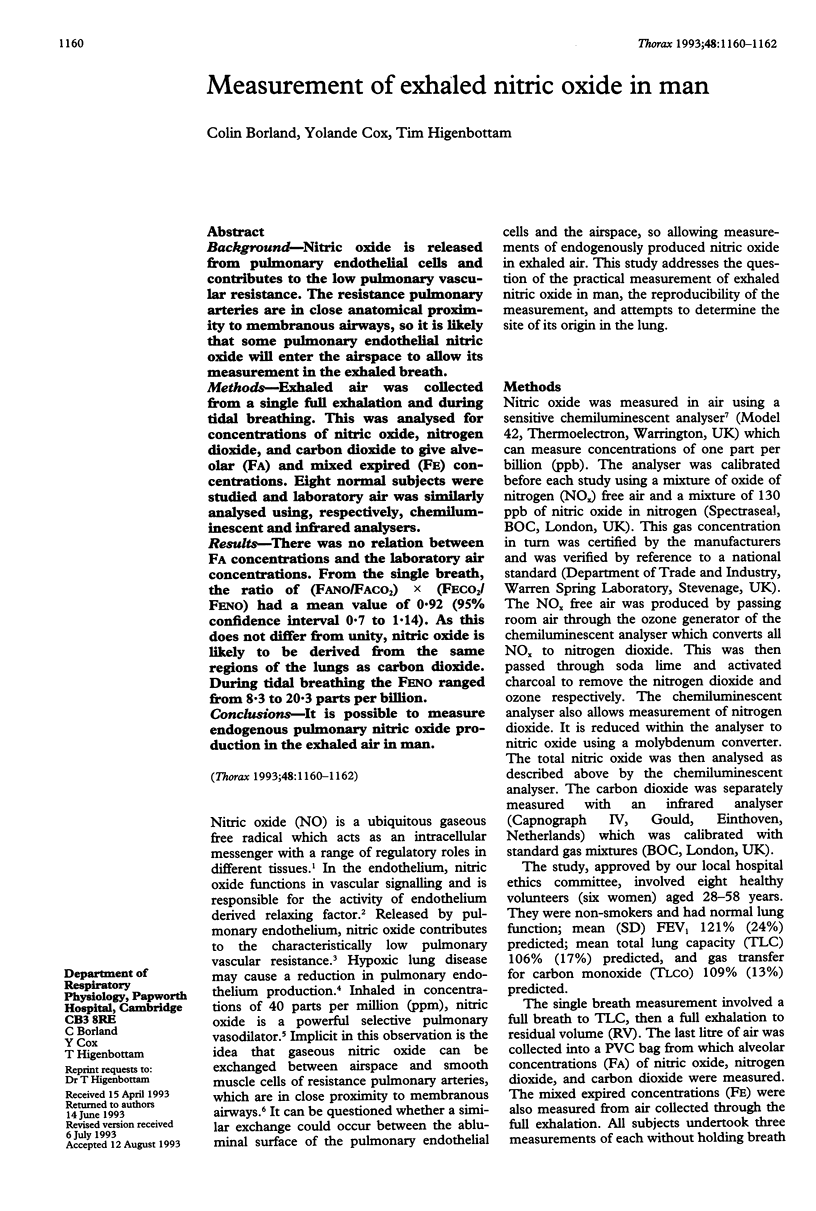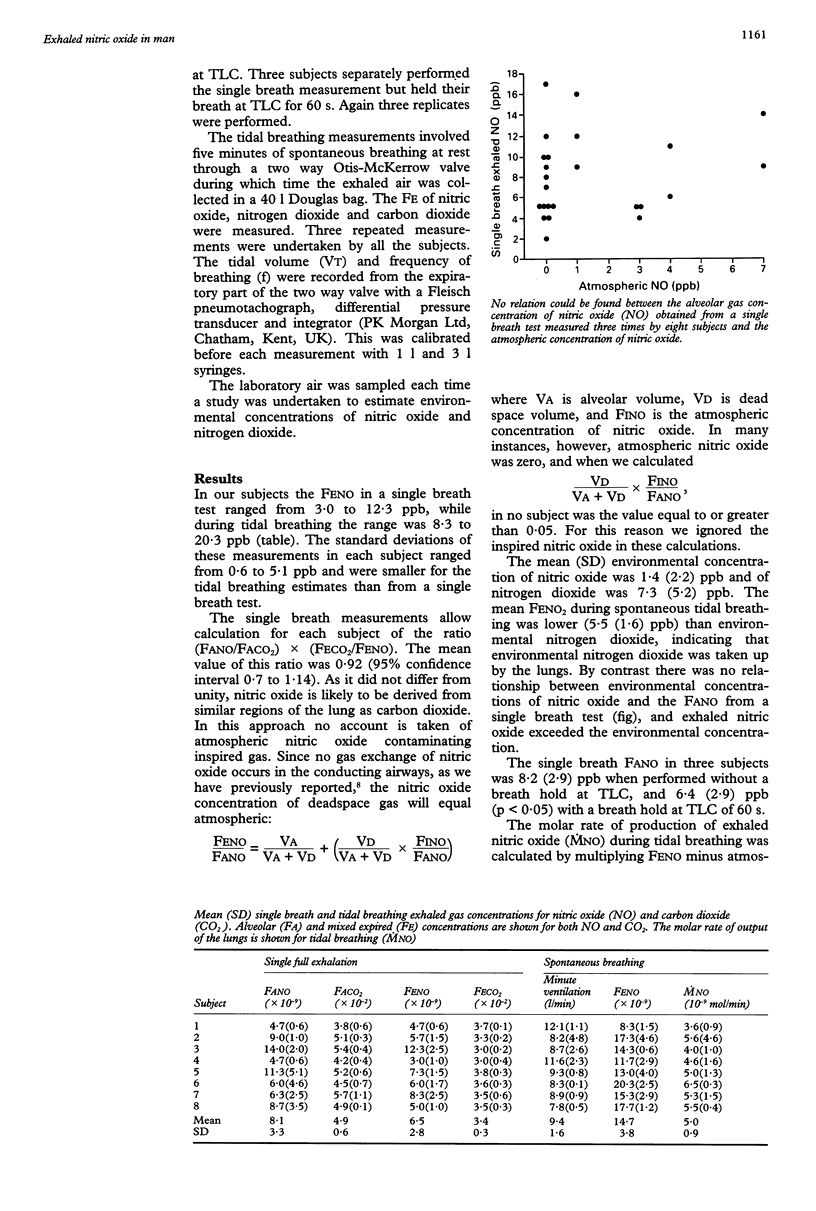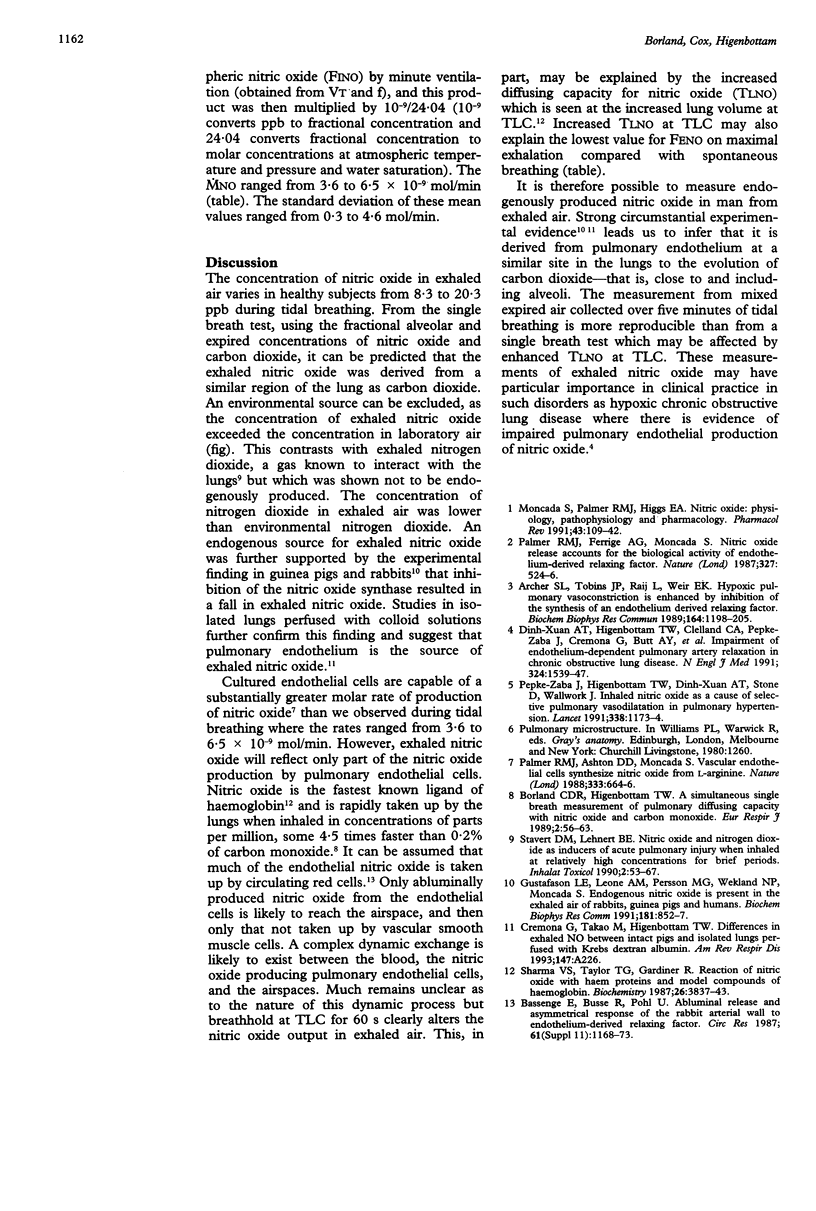Abstract
BACKGROUND--Nitric oxide is released from pulmonary endothelial cells and contributes to the low pulmonary vascular resistance. The resistance pulmonary arteries are in close anatomical proximity to membranous airways, so it is likely that some pulmonary endothelial nitric oxide will enter the airspace to allow its measurement in the exhaled breath. METHODS--Exhaled air was collected from a single full exhalation and during tidal breathing. This was analysed for concentrations of nitric oxide, nitrogen dioxide, and carbon dioxide to give alveolar (FA) and mixed expired (FE) concentrations. Eight normal subjects were studied and laboratory air was similarly analysed using, respectively, chemiluminescent and infrared analysers. RESULTS--There was no relation between FA concentrations and the laboratory air concentrations. From the single breath, the ratio of (Fano/Faco2) x (Feco2/Feno) had a mean value of 0.92 (95% confidence interval 0.7 to 1.14). As this does not differ from unity, nitric oxide is likely to be derived from the same regions of the lungs as carbon dioxide. During tidal breathing the Feno ranged from 8.3 to 20.3 parts per billion. CONCLUSIONS--It is possible to measure endogenous pulmonary nitric oxide production in the exhaled air in man.
Full text
PDF


Selected References
These references are in PubMed. This may not be the complete list of references from this article.
- Archer S. L., Tolins J. P., Raij L., Weir E. K. Hypoxic pulmonary vasoconstriction is enhanced by inhibition of the synthesis of an endothelium derived relaxing factor. Biochem Biophys Res Commun. 1989 Nov 15;164(3):1198–1205. doi: 10.1016/0006-291x(89)91796-8. [DOI] [PubMed] [Google Scholar]
- Borland C. D., Higenbottam T. W. A simultaneous single breath measurement of pulmonary diffusing capacity with nitric oxide and carbon monoxide. Eur Respir J. 1989 Jan;2(1):56–63. [PubMed] [Google Scholar]
- Dinh-Xuan A. T., Higenbottam T. W., Clelland C. A., Pepke-Zaba J., Cremona G., Butt A. Y., Large S. R., Wells F. C., Wallwork J. Impairment of endothelium-dependent pulmonary-artery relaxation in chronic obstructive lung disease. N Engl J Med. 1991 May 30;324(22):1539–1547. doi: 10.1056/NEJM199105303242203. [DOI] [PubMed] [Google Scholar]
- Gustafsson L. E., Leone A. M., Persson M. G., Wiklund N. P., Moncada S. Endogenous nitric oxide is present in the exhaled air of rabbits, guinea pigs and humans. Biochem Biophys Res Commun. 1991 Dec 16;181(2):852–857. doi: 10.1016/0006-291x(91)91268-h. [DOI] [PubMed] [Google Scholar]
- Moncada S., Palmer R. M., Higgs E. A. Nitric oxide: physiology, pathophysiology, and pharmacology. Pharmacol Rev. 1991 Jun;43(2):109–142. [PubMed] [Google Scholar]
- Palmer R. M., Ashton D. S., Moncada S. Vascular endothelial cells synthesize nitric oxide from L-arginine. Nature. 1988 Jun 16;333(6174):664–666. doi: 10.1038/333664a0. [DOI] [PubMed] [Google Scholar]
- Palmer R. M., Ferrige A. G., Moncada S. Nitric oxide release accounts for the biological activity of endothelium-derived relaxing factor. Nature. 1987 Jun 11;327(6122):524–526. doi: 10.1038/327524a0. [DOI] [PubMed] [Google Scholar]
- Pepke-Zaba J., Higenbottam T. W., Dinh-Xuan A. T., Stone D., Wallwork J. Inhaled nitric oxide as a cause of selective pulmonary vasodilatation in pulmonary hypertension. Lancet. 1991 Nov 9;338(8776):1173–1174. doi: 10.1016/0140-6736(91)92033-x. [DOI] [PubMed] [Google Scholar]
- Sharma V. S., Traylor T. G., Gardiner R., Mizukami H. Reaction of nitric oxide with heme proteins and model compounds of hemoglobin. Biochemistry. 1987 Jun 30;26(13):3837–3843. doi: 10.1021/bi00387a015. [DOI] [PubMed] [Google Scholar]


